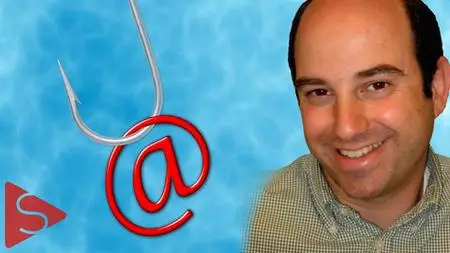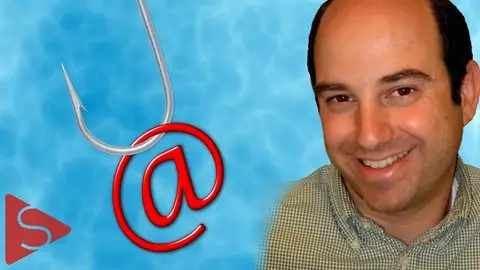Easily Identify Spam & Phishing E-mails
MP4 | Video: h264, 1280x720 | Audio: AAC, 44.1 KHz
Language: English | Size: 1.24 GB | Duration: 3h 13m
MP4 | Video: h264, 1280x720 | Audio: AAC, 44.1 KHz
Language: English | Size: 1.24 GB | Duration: 3h 13m
Identify e-mail scams BEFORE your corporate or personal data is breached!
What you'll learn
How to avoid phishing attacks and therefore prevent data breaches in the office or at home
Well-defined rules to identify if an e-mail is legitimate or if it's spam / phishing attempt
Set specific e-mail settings to help identify spam and increase your security
What to do and what NOT to do when faced with fishy e-mails
Get a FREE checklist with my Phishing Identification Rules for your own use
Requirements
Use any e-mail program on any platform: Windows / Mac / Web / Android / iOS / etc.
Description
[Last update: 08 Oct. 2021]
We, humans, are the weakest link when facing online security breaches, both in the office and at home.
According to a Google study, phishing is the biggest threat to our online security.
We all get phishing e-mails; some of them always make it through our filters. Those e-mails are dangerous because we can easily mistake them for a legitimate e-mail coming from a well-known company and we'll want to click on some malicious link inside this e-mail, thinking that we're doing the right thing. Or we may be tempted to open some attached file because the e-mail made us curious to do so or because we don't understand what the e-mail is about and we want to check it out further.
However, by clicking on such links or opening such documents, we may provide hackers access to our personal or corporate data and maybe even give them access to our computer and from there to our whole network!
Some large corporate hacks started with such phishing e-mails. And all it takes is a single employee to fall prey for such an attack.
The most important way to prevent such data breaches is to educate ourselves and our employees in how to identify these scams and what to do about them.
So how can you tell if an e-mail is indeed coming from a known company or if it's a phishing attempt?
In this course I will show you exactly how you can identify if an e-mail is spam or not by following a well-defined set of rules.
Throughout this course, I will use real examples from real e-mails I received to clearly illustrate everything that I teach.
I'll also show you some e-mail settings you better define to help you out and keep you safer and I'll also explain what to do and not to do.
This course is a MUST for everyone using e-mail in the office, at home, or on your mobile devices.
Who this course is for:
This course is a MUST for all e-mail users: in corporations, small businesses, and at home



